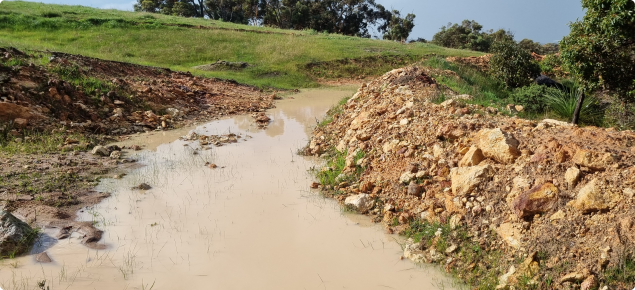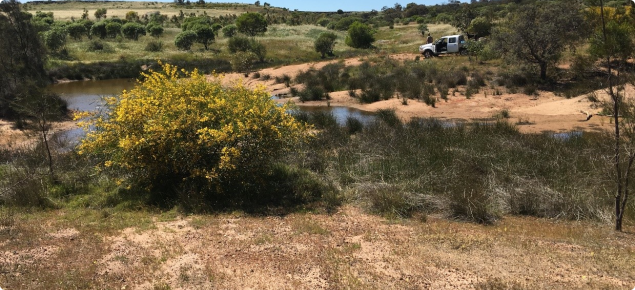Purpose and scope of review
The Department of Primary Industries and Regional Development (DPIRD) engaged the University of Western Australia (UWA) to review the broader principles and practices of natural sequence farming (NSF). The review has combined information from the literature, relevant case studies, and findings from interviews with knowledge holders and stakeholders.
Objectives of the review
- Develop a working definition and description of NSF as developed, described and documented by Peter Andrews and associates.
- Document the key principles and practices associated with NSF.
- Identify the expected benefits and associated risks with the application of NSF in the south-west of Western Australia (SWWA) dryland agricultural zone, with a focus on broadacre wheat and sheep farming, and to summarise the hydrological and production benefits and risks, specifically addressing:
- Design a landscape monitoring protocol to enable objective assessment of the performance of NSF as applied on any farm or catchment, including factors to consider about site assessment before implementation and related requirements.
What is natural sequence farming?
Natural sequence farming (NSF) is based on principles and work in the Hunter region of New South Wales by Mr Peter Andrews OAM. The aim of NSF is to increase water availability on hillslopes and recharge the alluvial aquifer, which should reduce channel incision and soil erosion and promote soil fertility and productivity. Elements of NSF are similar to methods used by soil conservation authorities. NSF appears to have modified and adapted these, and also includes methods not typically applied by these authorities.
The three main components that constitute the framework of NSF are:
- Landscape rehydration by stepped diffusion via hillslope structures to retain water in the landscape for longer.
- Recreating a river morphology that allows water to cascade between steps created by leaky weirs and increased floodplain storage.
- Maximising vegetation cover by limiting productive agriculture to one third of a property, reducing grazing pressure and using plants including exotic and weed species.
NSF literature can be summarised as:
Landscape remediation by manipulating the hydrology and geomorphology, with a focus on surface flow control structures to increase hillslope, floodplain and river water retention, controlled grazing pressure and the use of plants to colonise and create novel ecosystems that maximise cover, photosynthesis and nutrient cycling. The objective is to address land degradation including hillslope, floodplain and channel erosion, low productivity, salinity, overgrazing, loss of biodiversity, drought intolerance and infertile soils.
Application of NSF in the SWWA
The review proposed that NSF might be suitable or applicable for:
- the rejuvenated and steeply sloped catchments near the Darling Scarp of the Avon Basin (e.g. Toodyay, Northam, York areas)
- areas of the Chapman Valley (Sugarloaf System)
- the higher rainfall and hydrologically connected catchments draining to the coast from Perth to Esperance (the south west and south coastal areas of WA)
- limited areas of sandplain systems in the Swan Coastal Plain and Perth Basin with no salinity risk
- applying with caution in sandplain systems in the medium rainfall zone with no present surface salinity issues (e.g. Meckering & Wongan Hills area), and on skeletal soils in rejuvenated systems where rainfall is above 350 mm, and some similar land systems along the south coast.
Benefits
- significantly reduced or eliminated erosion of creeklines and waterways
- increased regeneration of native vegetation along creeklines and waterways leading to bank and bed stabilisation
- increased ground cover
- increased diversity and production of pasture base
- native perennial grasses returning.
Risks
- potential to increase the salinity risk in hydrozones with saline watertables
- reduced property production if the one-third design is adopted
- introduction of declared weed species by some practitioners
- increased water erosion from failure of inappropriately designed, located and constructed earthworks.
Further information
Download the full report The applicability, efficacy and risks of natural sequence farming in the dryland agricultural zone of south west Western Australia.



